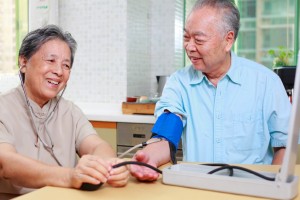If you or a loved one have been diagnosed with osteoporosis, you probably have a lot of questions. Osteoporosis can be a life changing illness, but it doesn’t necessarily need to be one that diminishes your quality of life. Sometimes, just a little bit of knowledge–and actions based on that knowledge–can go a long way toward helping people with this disease. Keep reading to learn more about this and how you can help improve your family’s quality of life–even if osteoporosis is in the picture.
Osteoporosis increases your risk of a broken bone or fracture. Depending on where the break is, disability may follow. For example, a broken hip can easily lead to a life of difficulty walking and moving around. Unfortunately, many who suffer from a broken hip because of a fall or another injury spend the rest of their lives in a wheelchair and/or a nursing home. Unfortunately, this happens to a lot of people. It’s estimated that 50 percent of elderly women will experience an osteoporosis related fracture at some point in their life.
One of the difficulties regarding osteoporosis is that it often is not diagnosed until an injury has occurred. Like many other things, prevention is the best way to avoid a loss of mobility, but to really understand how this fits in with osteoporosis, an accurate diagnosis is a must. Both women and men can get osteoporosis, so it’s important that you speak to a doctor about getting regular checkups for this. There are no visible symptoms for osteoporosis, but there are tests available to figure out whether you have it or not. The disease is characterized by low bone density, and it’s far better to be aware of the disease and take steps to fight it than it is to find out that you have it after a life changing injury.
Finally, know that a diagnosis of osteoporosis is just the beginning. Changes to diet might be necessary, and a medication might be prescribed to help correct the issue. Exercise can also be a helpful course of action. However, although exercise can help to increase both bone and protective muscle mass, it’s important that you work with a doctor while coming up with a list of acceptable activities. It is also important to work with a trainer or another exercise professional so that exercise can be done correctly so that it is most beneficial. Trainers also tend to have experience and training when it comes to injury prevention so that supervision is present. And, if something does happen, the correct steps can be taken to keep your loved one as safe as possible.
If you’re not sure where to start when it comes to handling osteoporosis, start with your primary care physician. There is a lot of information out there regarding osteoporosis, and the web is not always a reliable source–especially when it comes to self-diagnosis. Talk to a doctor and make sure that you are are headed in the right direction when it comes to the diagnosis, treatment, and care of osteoporosis.
The post Things to Know About Osteoporosis appeared first on Paradise In-Home Care.

No comments:
Post a Comment